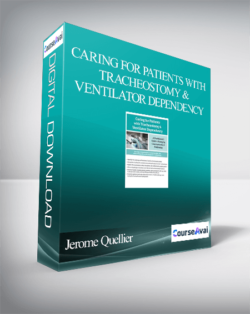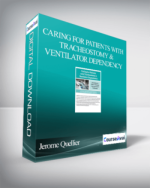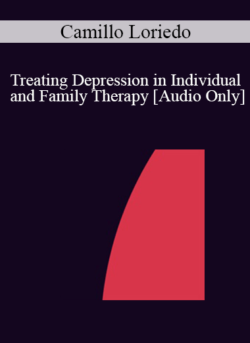Develop a Comprehensive Management Plan for Adults Living with Acute & Long–Term TracheostomyAs medical technology and intervention evolves, more patients are faced with temporary and long–term tracheostomy/ventilation as a part of their recovery. The very presence of a tracheostomy tube may elicit visceral reaction to secretion management and dehumanize the patient who is unable to exercise their decision making capacity, orally communicate their needs, and interact socially with staff or family.Purchase Caring For Patients with Tracheostomy & Ventilator Dependency: A Practitioner’s Guide to Managing Communication and Swallowing – Jerome Quellier courses at here with PRICE $199 $51 Caring For Patients with Tracheostomy & Ventilator Dependency: A Practitioner’s Guide to Managing Communication and Swallowing – Jerome QuellierDevelop a Comprehensive Management Plan for Adults Living with Acute & Long–Term TracheostomyAs medical technology and intervention evolves, more patients are faced with temporary and long–term tracheostomy/ventilation as a part of their recovery. The very presence of a tracheostomy tube may elicit visceral reaction to secretion management and dehumanize the patient who is unable to exercise their decision making capacity, orally communicate their needs, and interact socially with staff or family.Practitioners in acute hospitals, transitional rehabilitation units, skilled long–term settings, and homecare arenas are challenged to not only understand the basic functionality of a tracheostomy tube, but complete daily cares, assist their patients with swallowing and oral communication, and even train non-medical care providers. Management of the tracheostomized patient is often assumed to be complex. This misconception may become a barrier for placement in an environment most conducive to overall rehabilitation; to foster social closeness with staff, friends and family; and ultimately result in prolonging the weaning process.This recording will outline and compare the basic components of a tracheostomy tube, decision making surrounding the most appropriate type of tube to use for various populations, and the risks/benefits of placement. Through review of daily cares, the assessment and placement of a speaking valve, and dysphagia characteristics for this population, you will build the skills and confidence necessary to develop a comprehensive management plan. Finish this recording with a solid foundation of general knowledge, critical thinking algorithms, and an understanding of the roles and responsibilities of their specialty when faced with tracheostomized patients.Review the components to various tracheostomy tubes available and their functionsDiscuss the decision making process for placement of a tracheostomy tube and the advantages/disadvantages to short- and long-term placementReview basic daily nursing cares necessary for maintaining a tracheostomyExplain the assessment, safety precautions, and utilization of speaking valvesDiscuss assessment and treatment of swallowing and the application of a speaking valve to minimize aspiration risks and maximize oral communication including bedside screening vs. formal assessmentDevelop a plan of care and establish professional responsibilities across a multidisciplinary team to manage safe swallowing and maintain verbal communicationANATOMY AND PHYSIOLOGY OF TRACHEOSTOMYDefinition of terminology usedSurgical vs. Percutaneous TracheostomyCLINICAL FEATURES OF A TRACHEOSTOMY TUBE INTUBATION AND TRACHEOSTOMY – BENEFITS AND RISKSEndotracheal tube advantages/disadvantagesTracheostomy tube advantages/disadvantagesSIZING TRACHEOSTOMY TUBESMANUFACTURERS OF TRACHEOSTOMY TUBESSPECIAL CONSIDERATIONS OF MANAGING A TRACHEOSTOMY TUBECuff pressuresEssential daily caresNecessary suppliesCannula cleaning/exchangingMaintaining stoma and skin integrityMinimal Leak technique vs. minimal occlusive volumeSPEAKING VALVESAnatomy & physiology of common speaking tubesPopulation and timingWarning/PrecautionsAssessment and placement guidelinesTrouble shooting during valve assessment/useVentilator modifications for safety and successInline speaking valvesDecision making for the respiratory therapistsTidal volumesPeak inspiratory pressuresMinimal vent parameters to facilitate successful applicationFENESTRATED TRACHEOSTOMY TUBESDYSPHAGIA AND THE TRACHEOTOMIZED PATIENTPost extubation considerationEffect of tracheostomy on swallowingEffect of cervical bracing on tracheotomized patientAssessment of swallowingBlue Dye vs. Fees vs. MBSSImpact of speaking valve upon swallowingMULTIDISCIPLINARY CARE OF A PATIENT WITH TRACHEOSTOMYRole of SLP, nurse, and respiratory therapistReview a sample of policy/procedurePurchase Caring For Patients with Tracheostomy & Ventilator Dependency: A Practitioner’s Guide to Managing Communication and Swallowing – Jerome Quellier courses at here with PRICE $199 $51
 Mike Boyle – Functional Strength Coach 7
₹7,968.00
Mike Boyle – Functional Strength Coach 7
₹7,968.00
 Vanessa Van Edwards – Ziva Mind Meditation
₹8,466.00
Vanessa Van Edwards – Ziva Mind Meditation
₹8,466.00
Caring For Patients with Tracheostomy & Ventilator Dependency: A Practitioner’s Guide to Managing Communication and Swallowing – Jerome Quellier
₹8,466.00






